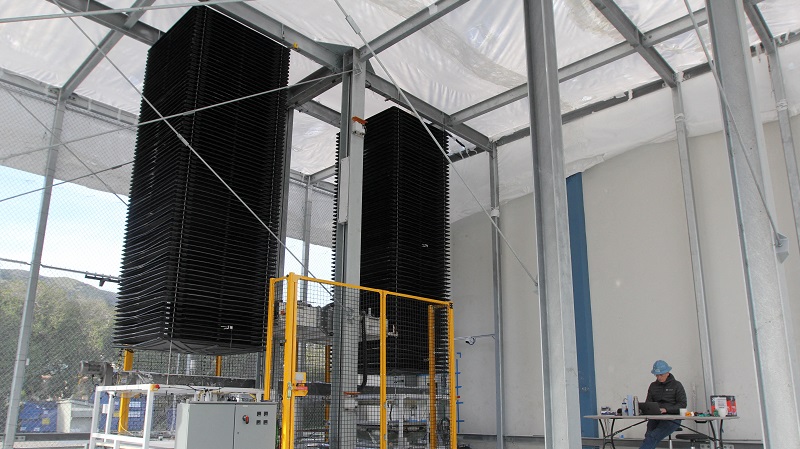The US has offered $3.5 billion in grants towards direct air capture, hoping to bring down the costs of removing carbon from the atmosphere
The world is failing to cut carbon emissions fast enough to avoid disastrous climate change, a dawning truth that is giving life to a technology that for years has been marginal – pulling carbon dioxide from the air.
Leading the charge, the U.S. government has offered $3.5 billion in grants to build the factories that will capture and permanently store the gas – the largest such effort globally to help halt climate change through Direct Air Capture (DAC) and expanded a tax credit to $180/tonne to bolster the burgeoning technology.
The sums involved dwarf funding available in other regions, such as Britain which has pledged up to 100 million pounds ($124 million) for DAC research and development. That compares with $12 billion in federal spending to drive demand for personal and commercial electric vehicles, Boston Consulting Group estimated.
While bids for the U.S. DAC hub funding were due on March 13, the government and some companies have yet to fully disclose details about the applications, many of which Reuters is reporting for the first time. The US Energy Department expects to announce winning bids this summer.
Worsening climate change and inadequate efforts to cut emissions have thrust the issue known as carbon removal to the top of the agenda, and U.N. scientists now estimate billions of tonnes of carbon will need to be sucked out of the atmosphere annually to reach a goal of capping global warming at 1.5 degrees Celsius.
While much of that will come from natural solutions such as planting more trees or increasing the ability of soil to sequester carbon, permanent carbon removal like DAC will also be needed.
Big barriers
Yet the list of hurdles is long.
The biggest plant to-date is capturing only 4,000 tonnes a year and costs are high, the talent pool is fledgling and corporate buyers for the credits largely remain on the sidelines. The role of oil companies in the space has also raised eyebrows and developers must muster support for hubs from communities that have often been damaged by big energy projects.
Plus, the CO2 must be stored permanently.
The U.S. government has said it wants to back four hubs, and interviews with more than 20 state, federal, company and investor sources show at least nine applications have been filed in a first round, with two major Occidental Petroleum projects also seen as strong contenders.
Among the most active firms so far has been Swiss start-up Climeworks, which has raised more than $800 million to date and is backed by Singaporean sovereign investor GIC.
China and Brazil to cooperate in stopping illegal trade fueling deforestation
In his first major interview since taking part in applications for three hubs – in Louisiana, California and North Dakota – Chief Executive Christoph Gebald said all had the potential to be scaled to the U.S. government’s target of a million tonnes, known as a megatonne, a year.
The company planned to boost headcount from the low double-digits to more than 100 over the next 18 months, and by 2030, the three hubs could create 3,500 direct jobs and tens of thousands of indirect jobs, if given the green light, he said.
The real challenge, though, was access to talent, Gebald said. “Where are you getting those people in the next 30 years?… there’s no university programme on DAC.”
Gebald said it would cost “easily in the billions” of dollars to create a megatonne facility and the firm could look to raise funds depending on the success of its three bids, although it would likely wait until 2024 to return to the market.
“The lion’s share of the capital is for assets, so it really depends on the build out programme.”
“Life or death”: Weather-watchers warn against Elon Musk’s Twitter changes
Another bidding for funding is start-up Carbon Capture, in partnership with Frontier Carbon Solutions and a new company called Twelve, which will use captured carbon to make sustainable aviation fuel in Wyoming, Jonas Lee, chief commercial officer for Carbon Capture, told Reuters.
“This industry is fragile right now, but all the arrows are lined up in the right direction. Now, we have to do our job which
Read More

